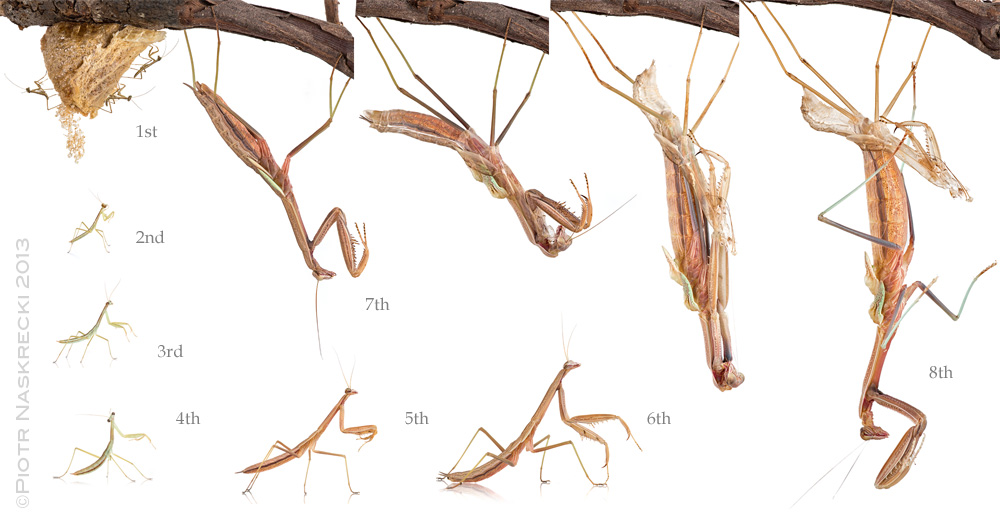I feed all my mantid species the same feeders, it just varies based on the mantid size.
To start with they get fruit flies as nymphs (Drosophila melanogaster, then Drosophila hydei). I've also fed "Turkish Gliders", wild fruit flies, and even
Phorid flies to nymphs depending on what I had on hand during a hatch. My nymphs seemed to prefer the flying wild flies, not sure if the motion attracted the mantids more or if they "taste" different. Although I have given smaller species, springtail feeders as well, in their habitat substrate too. As they age they get larger prey of course - houseflies, and pinhead crickets. Then moving up to bottle flies (and random fly species in warmer moths as I set
fly traps), net caught moths and a occasional butterfly, various sizes of crickets I breed, and wax moths (from my wax worm colony) (Galleria mellonella) about rounds out the feeders.
There are many other insects that can be caught wild, and some colonized too. I've played around with a few without much success last summer (such as
Milkweed bugs (Oncopeltus fasciatus) as they have to be captive breed for three generations to remove all traces of their toxicity).
Regarding how much I feed them depends on their current instar, overall size (as some species can range from 1" to about 5" in size as adults), although as a main guide I use their abdomen size as a basis on the amount of feeders needed. As such
I made a pictorial guide about their abdomen and feeding, for another member lately. Also you have to take into account the species and sex even, as males especially as adults eat less than females. Then of course mantids don't like to eat usually a day or two before a molt; however, after a molt or after laying a ooth they are really hungry.
A really rough guide though follows, and is what is fed once every two days (skipping a day). I would not advise using the guide for any actual feeding, but can give you an idea of what feeder prey to use. Small nymphs L1 to L2 get about five Melanogaster flies. L3 to L4 gets about four Hydei flies, or three/four pinhead crickets. L5 gets three/four houseflies, or two 1/4" (small) crickets. L6 gets about four bottle flies, or three 1/4" (small) crickets. L7 to L8 as adults vary depending on species and sex (as males eat less, and more feeders just stress them) they get two/three 1/4" to 1/2" (medium) crickets or the larger species I give two 3/4" to 1" (large) crickets, or three/four wax moths, or six to eight bottle flies (although some find them a nuisance at that point, in which case a smaller amount of bottle flies daily can work).
Also to get an idea of instar and their relative size, have a look at this image by
Piotr Naskrecki from his site




